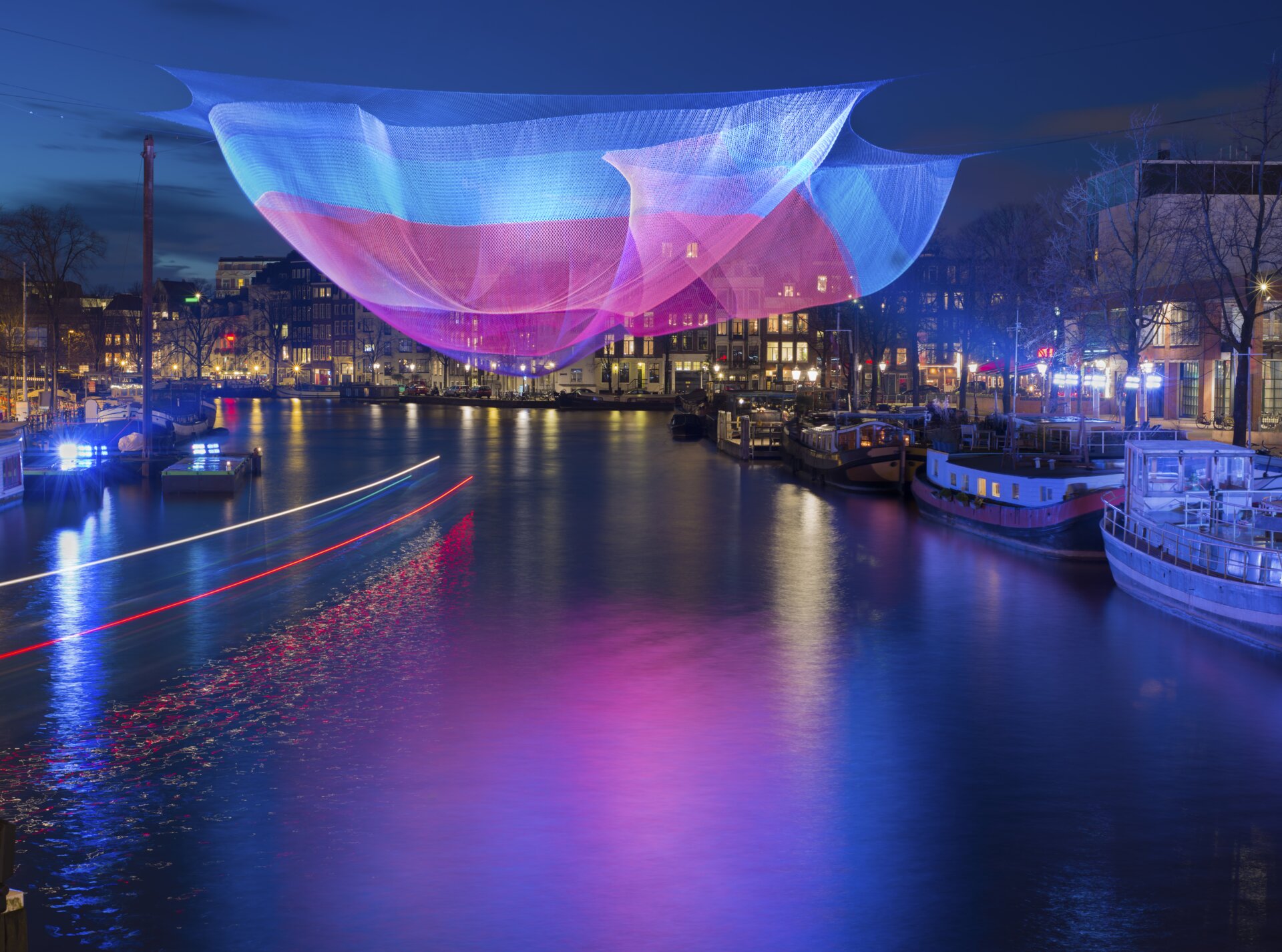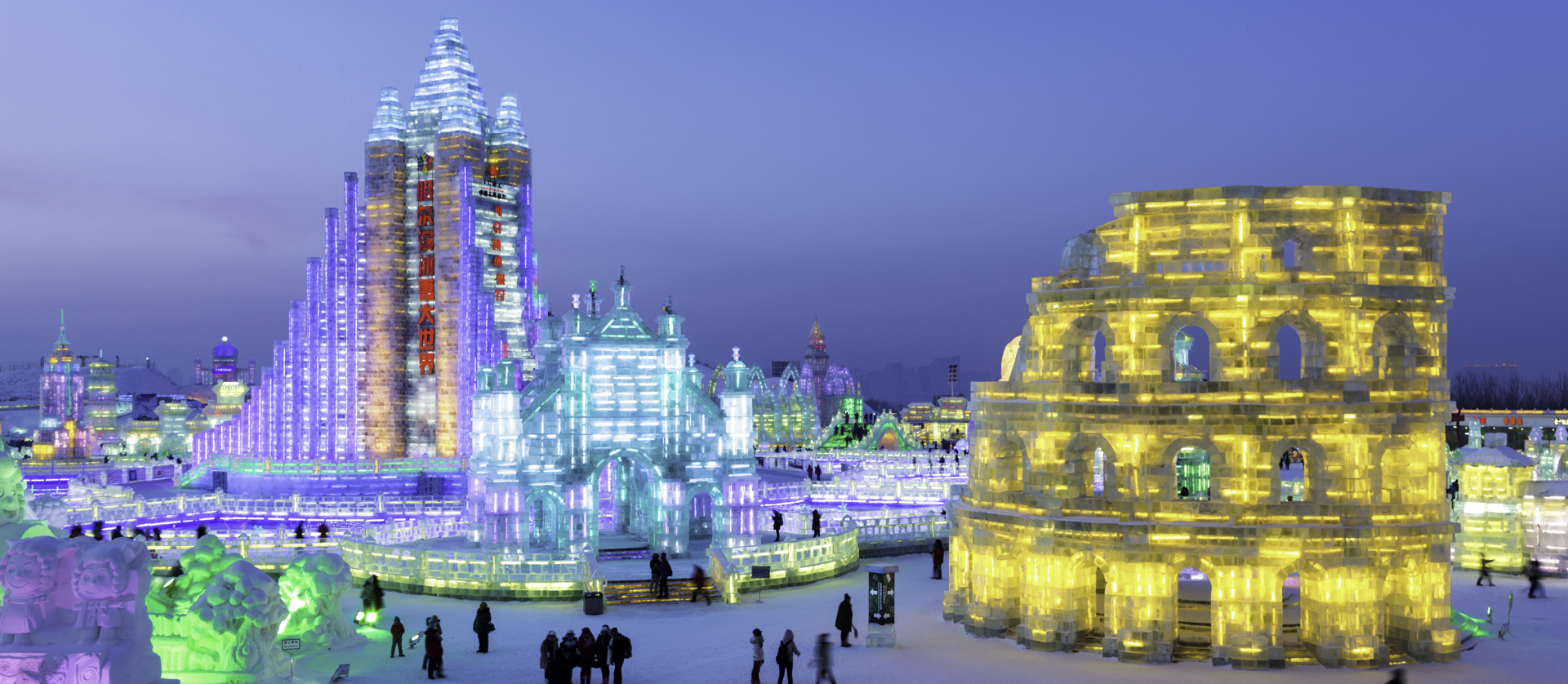
As longer and darker nights set in, light art festivals brighten up cities and towns across the globe. We embark on a journey to investigate the stories behind the colorful installations that fill the streets with people, despite the chill. From Germany and Sweden, to Singapore and Australia – off we glow!
We start our journey in the German capital for the Festival of Lights. Every October since 2005, light projections have added color and patterns to iconic buildings and monuments. From the Brandenburg Gate to the city cathedral, the event turns Berlin itself into a piece of art. In 2015, the festival attracted more than 2.2 million visitors – reportedly resulting in 750,000 hotel bookings!
Official website: http://festival-of-lights.de/en/

Next, to the Netherlands. Every winter the Amsterdam Light Festival sees installations scattered around the winding streets and canals in the heart of the city. Visitors can either take an evening boat tour or wrap up warm for a stroll around town. Saving energy and avoiding waste are central to this event: not only are 95% of the lights on display low-energy LEDs, the organizers also actively seek second ‘homes’ for the artworks once the festival is over.
Official website: https://www.amsterdamlightfestival.com/en/
Heading north, we’re off to Sweden for Lights in Alingsås, located near the lakes in the south of the country. The idea for this festival began in 1999 when a group of students gathered in the town to experiment with different lighting designs for public buildings. The following year, the municipality entered into agreements with the Professional Lighting Designers’ Association (PLDA) and the first edition took place. Held from September to November, the small town now welcomes leading light designers and over 85,000 visitors annually.
Official website: http://lightsinalingsas.se/en
From here we cross the Atlantic to check out Light City in Baltimore. Launched in spring 2016, it is the first large-scale, international light festival to be held in the United States. With planning for the second festival in April next year already underway, it seems it was a success. The first event focused around the city’s harbor and attracted over 400,000 visitors. Among the installations were hundreds of illuminated sculptures resembling a flotilla of paper boats. The brightest idea however was the array of snacks available: "lighted" cotton candy anyone?
Official website: http://lightcity.org/
Down to South America, we land in Colombia for Medellin’s Christmas lights. Known as El Alumbrado, it is one of the most expensive light displays in the world. Looking at the images, you can see why! In 2015 there were a reported 40,000 decorations made up of 900 kilometers of illuminated strings and 31 million LED lights. In 2012, National Geographic listed Medellin as one of the 10 best places in the world to see Christmas lights.

Off to Asia, where we are spoilt for choice. First stop: Japan for Kobe Luminarie. This festival has been held every December since 1995 to commemorate the Great Hanshin earthquake – one of the most devastating in Japan's history. After the earthquake Kobe was without lights, so the festival was held to give people hope. Originally it was supposed to be a one-off event, but popular demand has seen it return again and again. Today it is a strong symbol of the city’s recovery. The Italian name and style of the festival reflects the fact that the lights were donated by the Italian government, and that one of the two designers is Italian.
Now onto the Harbin Festival, taking place in January and February in China. Similar to the festival in Berlin, the event sees colorful light beamed onto structures. The only difference is that the structures are made of ice! Every winter, the city becomes home to the International Snow and Ice Festival. For weeks on end the structures and sculptures remain in perfect condition thanks to the sub-zero temperatures that can be found in the north of China. Every evening, multicolored lights add a touch of color to the otherwise very bleak and white landscape.
Official website: http://www.icefestivalharbin.com/
Next, a stop in Singapore for the i Light Marina Bay festival. Known as Asia’s leading sustainable light art festival, over 20 installations line the waterfront every spring. As the event coincides with the annual Earth Day, all the festival lights are temporarily switched off. The campaign ‘Switch Off, Turn Up’ also runs alongside the event with the aim of offsetting the event’s power consumption. It encourages people to switch off lights when not in use and turn up the temperature of air conditioning.
Official website: http://www.ilightmarinabay.sg/
And finally to Australia for Vivid Sydney, an event that began as a smart light festival in 2009 promoting energy efficiency and a reduction of obtrusive light into the night atmosphere. Taking place in May and June, the festival now includes projections onto some of the city’s most famous buildings and bridges – the Opera House has never looked so good.
Official website: http://www.vividsydney.com/